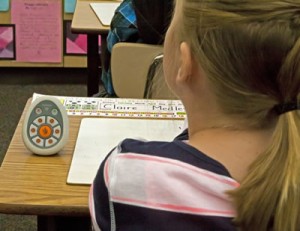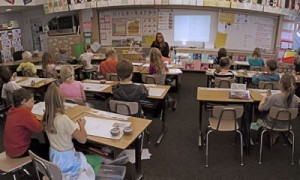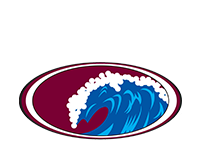
Move over iPod. There’s a new kid in town.
Since the Laguna school district introduced an innovative handheld device known as SRS, for student response systems, in classrooms last year, more and more teachers embrace their use and extol their virtues.
The devices provide teachers with a means of gauging if a lesson is being understood in real time by posing multiple choice questions that the students answer with a push of a button, supplying their instructor with instant digital feedback and allowing them to adjust their lesson accordingly.
While the teacher views the actual responses of each student, the general response flashes on a classroom screen for all to see, maintaining the anonymity of individual answers by summing up answers classwide.
Students clearly like gadgets. The eager faces in Linda Barker’s second-grade classroom at Top of the World Elementary spoke volumes. Asked if anyone would explain the use of the little egg-shaped remotes they were holding, almost every hand shot up. Answers ranging from “You can answer math problems,” and “We can use them to review sentences,” to “You just have fun with it.”
Teachers strive to structure lessons that promote, and reinforce actively engaging students, one of the district’s three key goals, said Nancy Hubbell, assistant superintendent of instructional services. SRS devices were purchased to help meet that goal, she said.
While Barker thought she had engaged students before, she has seen a marked improvement with the new devices and even new uses. They are perfect for taking attendance at times when kids are overexcited and distracted. By using the SRS device “we get 100 percent student engagement,” she said.
“As soon as the devices are on their desk, they’re engaged,” agreed Jay Williams, a fifth-grade El Morro teacher, who recently described how he used the tool to school board members.
He is able to pose a question during a lesson and check for student understanding then and there. “I can narrow the instruction for individual learners on the concepts they are having trouble with,” he said.
Barker’s class used SRS to review math concepts. A problem was projected on the screen with four multiple-choice answers. The students worked out the problem on their white boards and then punched in their answers. A cheer went up when all responses were in and a bar graph on the screen showed they had all answered correctly.
A similar question on subtraction of two-digit numbers revealed that at least a few students needed a little more instruction, readily provided by a volunteer student “professor.” For her part, Barker noted the students who were struggling so that she could give them a little more instruction on the concept later.

High school world history teacher Jun Shen recently used SRS to quiz students on areas tested the week before. Their responses to the multiple-choice questions showed the class was evenly divided between two answers to one question, for example. In typical multiple-choice scenario, neither was wrong, but one was more true. Shen reviewed the nuances.
The device helps Shen discover what content students have failed to grasp, whether vocabulary is tripping them up, whether a concept still eludes them, or whether they simply need to study more.
Shen finds the anonymity of the process particularly conducive to encouraging critical thinking through open debate and discussion of controversial topics. He can take an anonymous poll on a given issue and the number of students who’ve voted pro and con shows up on the screen. Knowing that others in the class share their position, or at least that others have taken different positions, makes students more willing to debate the issues openly.
Teachers reacted so positively to the first few systems, the district asked SchoolPower to help buy more. The request became the focus of the organization’s fund-a-need drive. Thanks to SchoolPower’s subsequent donation of $56,000, the district now boasts 35 classroom sets of SRS, some at each school.
“We want students engaged in activities for two- to 10-minute intervals,” said Victor Guthrie, director of technology, who recently reported on SRS progress to date.
District officials expected the devices would be used to check for understanding and to measure learning. But creative teachers recognize their value elsewhere and continue to discover and share new uses.
Barker used them for a little fun at Halloween, having her students answer less-than-serious poll questions about the most popular costumes of if they’d prefer to sleep in a coffin or live in a giant pumpkin.
“It is a powerful tool,” said Williams.
Photography By: Mitch Ridder




